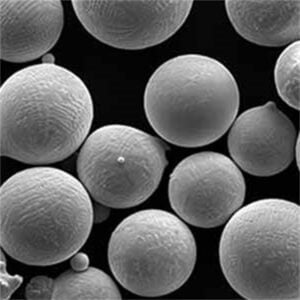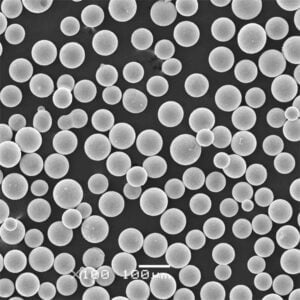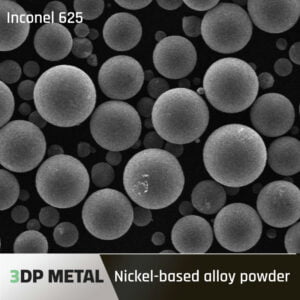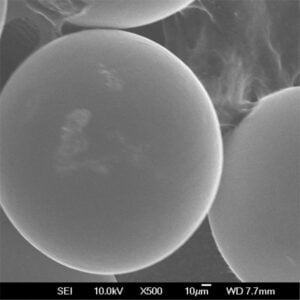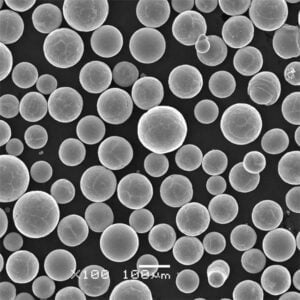インコネル粉末3Dプリンタの概要
目次
インコネル粉末3Dプリンター は、オーステナイト系ニッケル・クロム基超合金であるインコネル用に設計された特殊積層造形システムです。これらの合金は、卓越した強度、耐酸化性、極端な温度に耐える能力で知られており、航空宇宙、自動車、エネルギー産業での用途に最適です。
インコネル3Dプリンティングは、従来の製造方法では困難または不可能であった複雑な形状や複雑なデザインの作成を可能にします。インコネル粉末の薄い層を融合させることで、これらのプリンターは、寸法精度に優れ、材料の無駄を最小限に抑えた、非常に複雑で耐久性のある部品を製造することができます。
インコネル粉末3Dプリンターガイド
インコネル粉末3Dプリンターは通常、粉末床溶融(PBF)または指向性エネルギー堆積(DED)技術を採用した工業用マシンです。選択的レーザー溶融(SLM)や電子ビーム溶融(EBM)のようなPBFプロセスでは、コンピュータ支援設計(CAD)モデルに従ってインコネル粉末の薄い層を選択的に溶融・融合させます。一方、DEDプロセスでは、レーザーや電子ビームなどの集束エネルギー源を使用して、インコネル粉末を基板上に直接蒸着・溶融します。
インコネル粉末3Dプリンタの種類
| プリンタータイプ | テクノロジー | メリット | 制限事項 |
|---|---|---|---|
| 選択的レーザー溶融(SLM) | パウダーベッドフュージョン(PBF) | 高精度、優れた表面仕上げ、複雑な形状に最適 | 造粒量が限られ、造粒速度が比較的遅い |
| 電子ビーム溶解(EBM) | パウダーベッドフュージョン(PBF) | 造形速度が速く、高温用途や応力除去部品に最適 | 真空環境を必要とし、表面仕上げが粗くなる |
| 直接エネルギー蒸着(DED) | 直接エネルギー蒸着 | 大量生産、マルチマテリアル対応、補修・コーティング用途に最適 | PBFと比較して低い解像度と表面仕上げ |
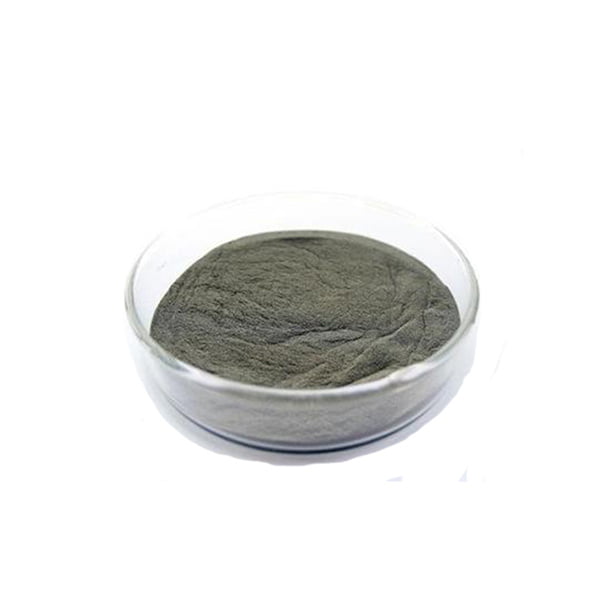
インコネル3Dプリンティングプロセス
インコネル3Dプリンティング・プロセスには通常、以下のステップが含まれます:
- CADモデリング:コンピュータ支援設計(CAD)ソフトウェアを使用して、目的の部品の3Dモデルを作成します。
- ファイルの準備:CADモデルは、互換性のあるファイル形式(STL、AMFなど)に変換され、プリンターが解釈できるように薄いレイヤーにスライスされます。
- パウダーの準備:インコネル粉末は慎重に準備され、プリンターの粉末供給システムに装填されます。
- ビルド・セットアップ:ビルドプラットフォームが準備され、プリンターが特定のインコネル合金とビルドパラメーター用にキャリブレーションされる。
- レイヤー・バイ・レイヤー製造:プリンターは、デジタルモデルに従ってインコネル粉末の層を選択的に溶融・融合させ、目的の部品を作成します。
- 後処理:造形が完了した後、部品は、熱処理、表面仕上げ、機械加工など、用途に応じてさまざまな後処理工程を経る。
インコネル粉末3Dプリンターの機能
| 能力 | 詳細 |
|---|---|
| ビルド・ボリューム | デスクトップ・サイズのビルド・チャンバーから大規模な産業用システムまで幅広く対応 |
| 材料 | インコネル625、718などの各種インコネル合金の印刷が可能。 |
| 精密 | 一般的な層厚は20~100ミクロンで、優れた寸法精度を提供します。 |
| フィーチャー・レゾリューション | サブミリメートルレベルの複雑な形状や内部形状の製造が可能 |
| 表面仕上げ | 製造時の表面仕上げは、工程や後処理によって、粗いものから鏡面に近いものまで様々である。 |
| カスタマイズ | カスタマイズ可能なビルドパラメータ、材料、後処理オプションを提供するシステムもあります。 |
インコネル粉末3Dプリンタ 供給者と価格帯
| サプライヤー | プリンターモデル | 価格帯(米ドル) |
|---|---|---|
| イーオーエス | EOS M 290 (EBM) | $800,000 – $1,200,000 |
| SLMソリューション | SLM 500 (SLM) | $600,000 – $900,000 |
| コンセプトレーザー | コンセプトレーザーM2(SLM) | $500,000 – $800,000 |
| オプトメック | レンズ 850-R(デッド) | $400,000 – $700,000 |
| 3Dシステムズ | DMPフレックス350(DED) | $300,000 – $600,000 |
注:価格は構成、付属品、地域価格によって異なる場合があります。
インコネル粉末3Dプリンタの設置、操作、メンテナンス
| アスペクト | 詳細 |
|---|---|
| インストール | 通常、適切な電力、換気、安全システムを備えた専用施設が必要である。 |
| オペレーター・トレーニング | これらの複雑なシステムを安全かつ効果的に操作するためには、広範なトレーニングが必要である。 |
| マテリアルハンドリング | インコネル粉末の適切な取り扱いと保管は、安定した印刷品質を確保するために非常に重要です。 |
| メンテナンス | 清掃、校正、部品交換を含む定期的なメンテナンスが不可欠 |
| 安全への配慮 | 適切な個人用保護具(PPE)と安全手順に従う必要がある。 |
インコネル粉末3Dプリンタサプライヤーの選択
インコネル粉末3Dプリンターのサプライヤーを選択する際には、以下の要素を考慮することが不可欠です:
| ファクター | 考察 |
|---|---|
| 応募資格 | 造形量、材料、精度、フィーチャー解像度の観点から、プリンターの能力を評価する。 |
| 生産量 | プリンターのスループットと拡張性を評価し、お客様の生産ニーズに応えます。 |
| サービス&サポート | サプライヤーの技術サポート、トレーニング、保守サービスを検討する。 |
| 認証 | サプライヤーが関連する業界の認証および基準を満たしていることを確認する。 |
| 総所有コスト | 初期投資、運転コスト、消耗品、メンテナンス費用を考慮する。 |
インコネル粉末3Dプリンティングの長所と短所
| 長所 | 短所 |
|---|---|
| 複雑な形状の製造能力 | 高い初期投資と運用コスト |
| 優れた材料特性(強度、耐熱性) | システムによっては生産量が限られている |
| 減法製造に比べて材料の無駄が少ない | 残留応力と欠陥の可能性 |
| カスタマイズと設計の柔軟性 | 厳格なマテリアルハンドリングと安全要件 |
| 軽量化とパフォーマンス最適化の可能性 | アプリケーションによっては後処理が必要な場合がある。 |
インコネル粉末3Dプリンタの利点と限界
| メリット | 制限事項 |
|---|---|
| 複雑な内部形状や複雑な形状を作成する能力 | 従来の製造方法に比べ、製造量は一般的に少ない。 |
| 優れた機械的特性と高温性能 | 厳密な材料取り扱いと安全プロトコルが必要 |
| 設計の柔軟性とカスタマイズの可能性 | 印刷部品に残留応力や欠陥が発生する可能性 |
| 減法製造に比べて材料の無駄が少ない | 高い初期投資と運用コスト |
| 軽量化とパフォーマンス最適化の可能性 | 材料の選択肢が限られている(インコネル合金に限定) |
注:利点と制限は、特定のプリンタモデル、アプリケーション、およびユーザー要件によって異なる場合があります。
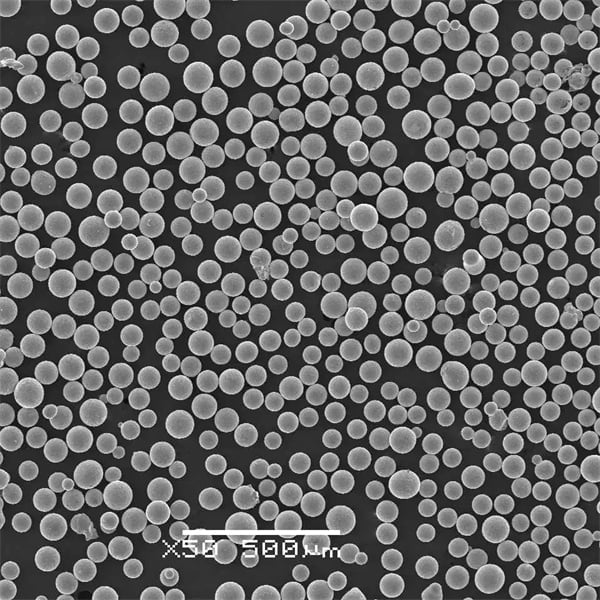
よくあるご質問
| 質問 | 答え |
|---|---|
| インコネル粉末3Dプリンタはどのような産業でよく使用されていますか? | 航空宇宙、自動車、エネルギーなど、卓越した強度と耐熱性を備えた高性能部品を必要とする分野。 |
| インコネル3Dプリンティングは従来の製造方法と比べてどうですか? | インコネル3Dプリンティングでは、鋳造や機械加工のような従来の方法では困難または不可能な複雑な形状や内部形状を作成することができます。しかし、造形量は一般的に少なく、プロセスにはより厳格な材料の取り扱いと安全プロトコルが必要です。 |
| インコネル3Dプリンターで達成可能な一般的な層厚と形状解像度を教えてください。 | 層厚は通常20~100ミクロンで、形状解像度はサブミリメーターレベルに達するため、複雑な形状や内部形状の製造が可能である。 |
| インコネル3Dプリンタは、インコネル合金以外の材料でも使用できますか? | ほとんどのインコネル3Dプリンタは、インコネル合金専用に設計されていますが、システムによっては、他のニッケル基超合金や高温材料との互換性が制限される場合があります。 |
| 3Dプリントされたインコネル部品の表面仕上げは、従来から製造されている部品と比べてどうですか? | 製造時の表面仕上げは、使用される特定の印刷プロセスとパラメータによって、粗いものから鏡面に近いものまでさまざまです。所望の表面品質を得るためには、機械加工や表面仕上げなどの後処理工程が必要になる場合があります。 |
| インコネル3Dプリンターの典型的なメンテナンス要件は何ですか? | クリーニング、キャリブレーション、部品交換を含む定期的なメンテナンスは、安定した印刷品質とシステム性能を確保するために不可欠です。また、インコネル粉体の適切な取り扱いと保管も非常に重要です。 |
| 正しいインコネル3Dプリンターサプライヤーを選ぶにはどうすればよいですか? | サプライヤーを選択する際には、アプリケーション要件、生産量、サービスとサポート、認証、総所有コストなどの要素を考慮する。さらに、造形量、材料、精度、フィーチャー解像度の観点から、プリンターの能力を評価する。 |
シェアする
MET3DP Technology Co., LTDは、中国青島に本社を置く積層造形ソリューションのリーディングプロバイダーです。弊社は3Dプリンティング装置と工業用途の高性能金属粉末を専門としています。
関連記事
Met3DPについて
最新情報
製品

3Dプリンティングと積層造形用金属粉末







